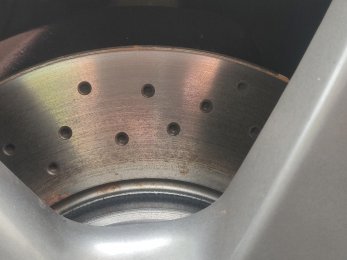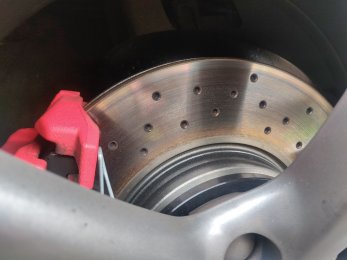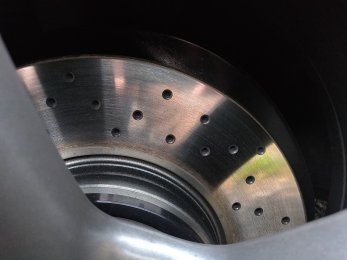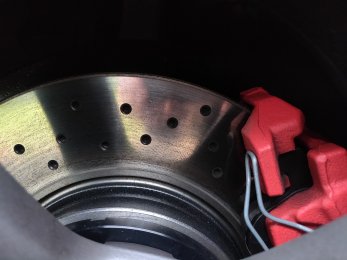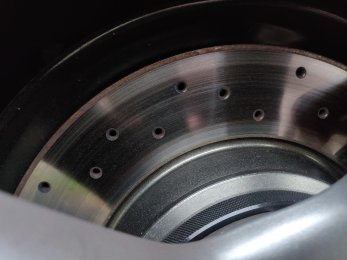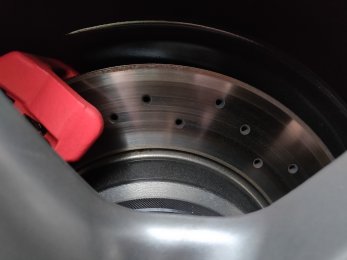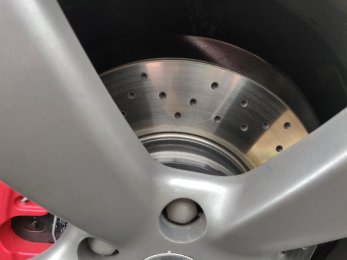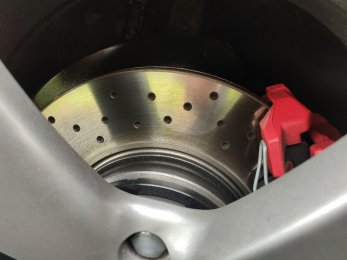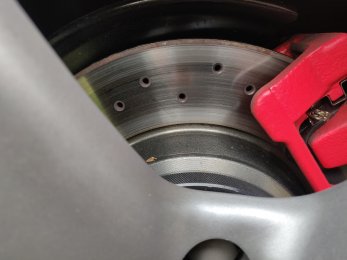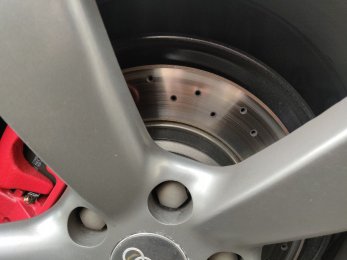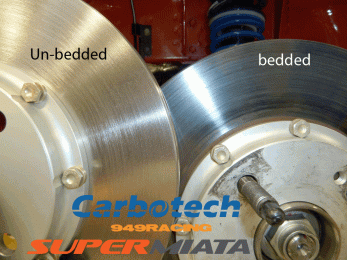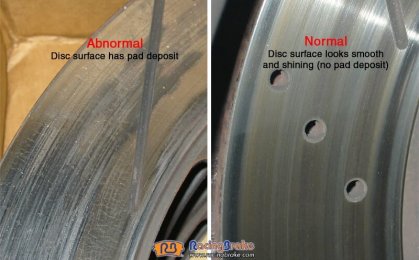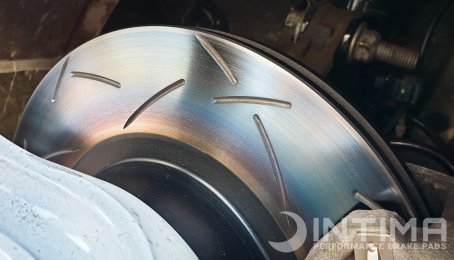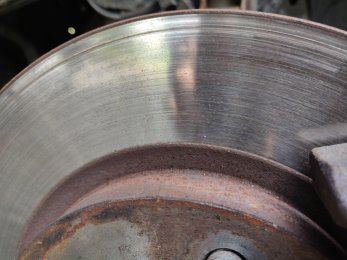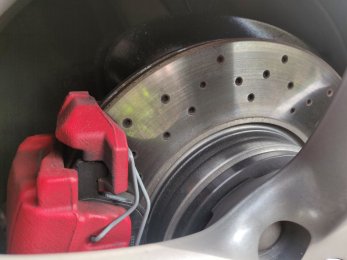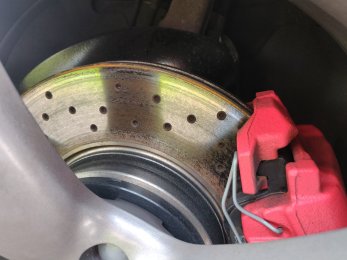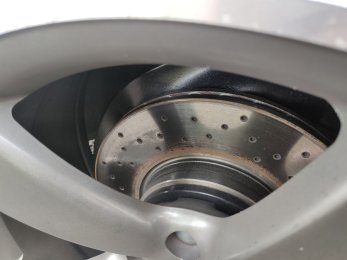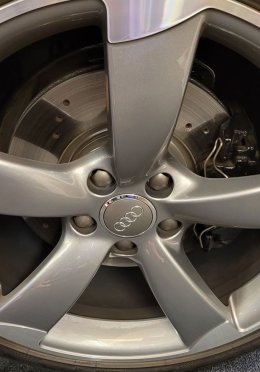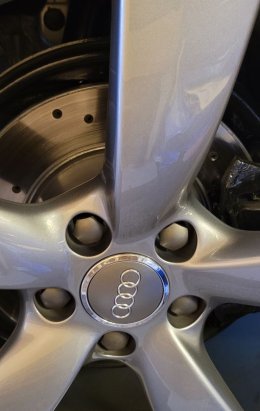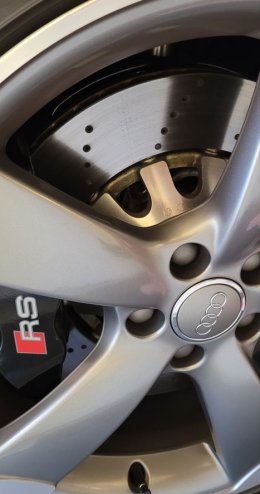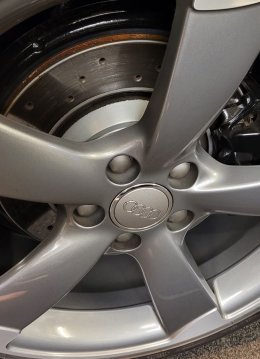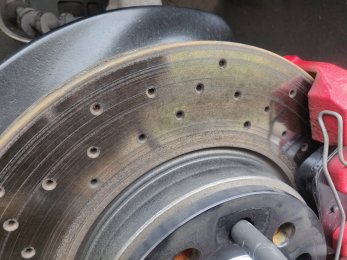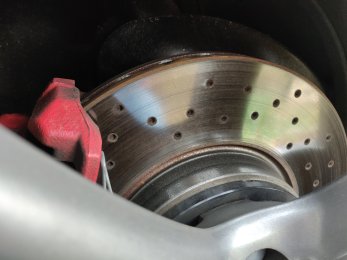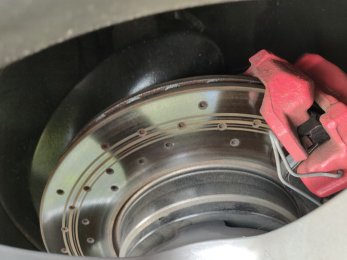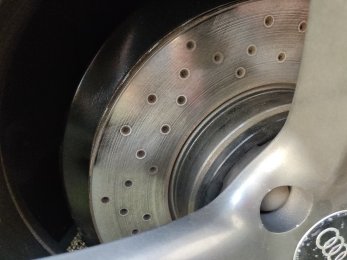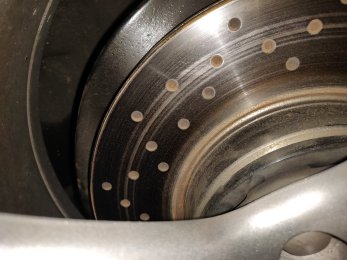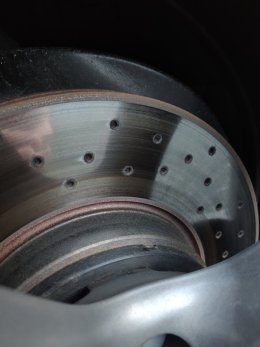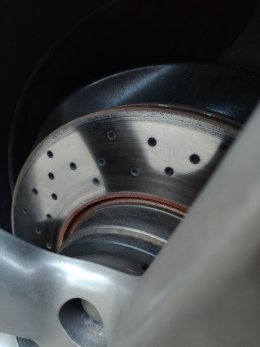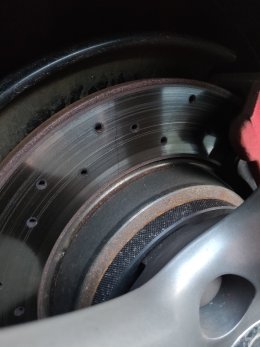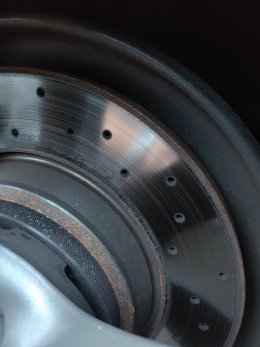Hello all,
I replaced my brake discs and pads recently and something strange is happening.
I bought Brembo extra drilled (rear) and dimpled (front) discs, and Zimmermann pads for both ends. I did a really thorough job, cleaned and inspected everything, degreased with brake cleaner multiple times before installing, and measured the run-out of the disc when on the hub. I also painted the calipers while everything was taken apart.
The car brakes well and there are no vibrations.
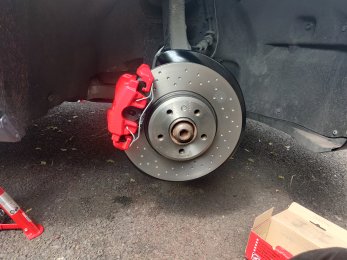
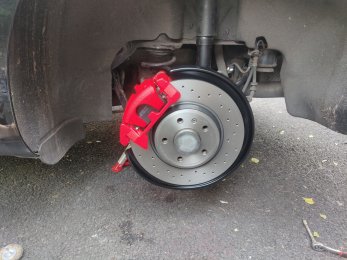
Let me explain everything in chronological order and get to the issue.
I started with the rear brakes. After replacing I took the car for a spin and everything worked fine, nothing unusual.
After doing the front, I had some clicking noise when not applying brakes and some noise when applying brakes.
Upon reading about dimpled/drilled/slotted discs, it appears that it is their characteristic to be somewhat noisy.
The clicking noise when not applying brakes went away after a short time.
Because I test drove the car after doing the rear, it would mean these noises are only coming from the front, but the rear is also drilled so I'm confused?
I did about 200km of gentle driving and did not brake hard to allow the brakes to bed in.
The rear seems to be bedding in fine, pads appear to be depositing some material on the face of the disc, but it doesn't look like it's happening for the fronts, like at all.
After the car sat for a while and there were some rust spots on the discs, I took it for a spin and the rears were cleared to bare metal when I got back but the front looked like the rust got smeared around instead of clearing off. I know you can't smear rust but that's what it looked like.
Yesterday I took it for a spin again and decided to step on the brakes a bit harder this time. The car was braking well, no vibrations or anything, but it looks like the front discs were once again unphased by the stress they were put under. They aren't even shiny. The rear discs turned slightly brown.
Are the front discs not working well with these pads? Have I been practically braking with mostly the rear all this time? Have I started to overheated the rears?
Here are some pictures what it looks like after some harder braking. Rear is slightly discolored and the front are slightly shiny just on the outside edge.
front:
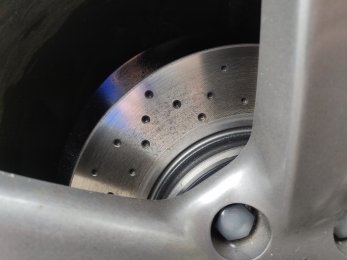
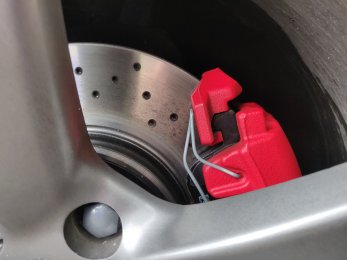
rear:
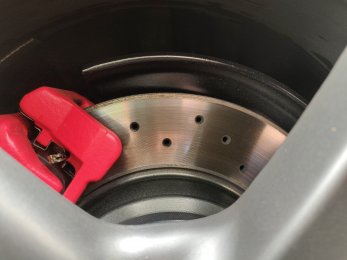
I replaced my brake discs and pads recently and something strange is happening.
I bought Brembo extra drilled (rear) and dimpled (front) discs, and Zimmermann pads for both ends. I did a really thorough job, cleaned and inspected everything, degreased with brake cleaner multiple times before installing, and measured the run-out of the disc when on the hub. I also painted the calipers while everything was taken apart.
The car brakes well and there are no vibrations.


Let me explain everything in chronological order and get to the issue.
I started with the rear brakes. After replacing I took the car for a spin and everything worked fine, nothing unusual.
After doing the front, I had some clicking noise when not applying brakes and some noise when applying brakes.
Upon reading about dimpled/drilled/slotted discs, it appears that it is their characteristic to be somewhat noisy.
The clicking noise when not applying brakes went away after a short time.
Because I test drove the car after doing the rear, it would mean these noises are only coming from the front, but the rear is also drilled so I'm confused?
I did about 200km of gentle driving and did not brake hard to allow the brakes to bed in.
The rear seems to be bedding in fine, pads appear to be depositing some material on the face of the disc, but it doesn't look like it's happening for the fronts, like at all.
After the car sat for a while and there were some rust spots on the discs, I took it for a spin and the rears were cleared to bare metal when I got back but the front looked like the rust got smeared around instead of clearing off. I know you can't smear rust but that's what it looked like.
Yesterday I took it for a spin again and decided to step on the brakes a bit harder this time. The car was braking well, no vibrations or anything, but it looks like the front discs were once again unphased by the stress they were put under. They aren't even shiny. The rear discs turned slightly brown.
Are the front discs not working well with these pads? Have I been practically braking with mostly the rear all this time? Have I started to overheated the rears?
Here are some pictures what it looks like after some harder braking. Rear is slightly discolored and the front are slightly shiny just on the outside edge.
front:


rear:






